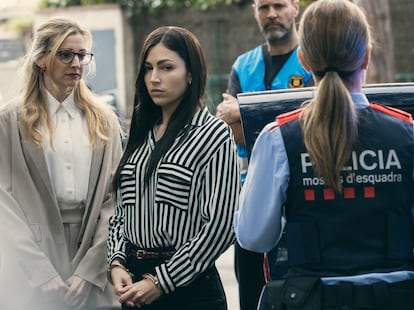The events are usually facts that portray the darkest side of human nature and reveal the less confessable aspects of people: hatred, resentment, revenge, perversions, cruelty, fears… Murders, crimes, homicides, violence, In general, they are based on feelings common to all and they crudely teach us the worst of what “one of us”, another human being, is capable of. They let us see—or at least, intuit—the evil that inhabits us, the Mr. Hyde that we carry inside. For this reason, and because we are educated and tamed these emotions from childhood to guarantee a good life in society, events powerfully capture our attention. They trap us, generating a mixture of bewilderment (disbelief) and rejection (denial), which almost anxiously and immediately demands an explanation: Who could have done that? (author); because? (the mobile); and how? (he mode of operation).
Media events are not something new (from the Alcasser girls to the cases of Diana Quer, Laura Luelmo, Bretón, the Almonte crime, the pescaitothat of the Asunta girl, that of the Barcelona urban guard…), but the networks and television on demand, and the consequent proliferation of platforms together with the rise of true crime As a form of entertainment from the couch, they have multiplied the exposure of these terrible cases and their protagonists, interfering in the mourning of family members and generating social detachment from the victims. The morbidity of violence and the pain of others becomes tremendously impudent and merciless when it becomes another form of entertainment.
Event journalism, a genre that has historically had a bad reputation in the profession – often described as “scavenger” for scavenging and feeding on deaths – tries to answer these questions and satisfy this urgent demand, which entails a great difficulty and responsibility.
Firstly, events always rush us, there is no forecast for their occurrence, they are never on the agenda, which implies an almost immediate mobilization to the scene of the events to obtain the first reliable information. Secondly, clarifying what happened requires a certain management of sources, to discriminate the degree of truth and plausibility of the information that gathers around a crime. In an event, the journalist always treads on very slippery ground. And thirdly, as event journalists we work in the environment of the victims, the people who have suffered the blow, directly or indirectly; and which are usually in a state of shock.
It is precisely the delicate surroundings of the victims that provide the most information to both police investigators and journalists, who usually coincide at the scene of the events. At that moment a double relationship of the journalist opens; on the one hand, with the victim’s environment; and, on the other, with police investigators, with direct access to all the information.
Thus begins a balancing exercise in which you have to calibrate how to answer the original questions (who? Why? How?), without accusing anyone without evidence, of course; but, above all, explaining what happened “without adding pain to the pain” of those affected. Knowing that everything that is published may be replicated and repeated from now on by other means (written and audiovisual), on social networks, on radios and podcastsin books, in television series and documentaries… For an indefinite period of time, before, during and after the trial, if it occurs.
Last week, Patricia Ramírez, the mother of the boy Gabriel Cruz, murdered by his father’s girlfriend, Ana Julia Quezada, in 2018, repeated that phrase that marks a limit: “Do not add more pain to pain.” He did so in his last hasty public appearances, in which he begged that six years after his death – “when everything has already been told and leaked, including the autopsies” – that a documentary not be allowed to be made or broadcast in which A microphone is placed in prison on the murderer of his eight-year-old child. The first woman sentenced to permanent, reviewable prison in Spain, the one who wanted to deceive them during the 12 days of searching for the little boy by making them believe that his alleged captors would release him, and who even went so far as to put false evidence (a Gabriel t-shirt) in the way of the researchers. “What kind of society are we or do we want to be if we allow that?” she asked. “It’s not a series, it’s our life; It is not fiction, we are not actors,” Gabriel’s mother insisted.

This Saturday, in Almería, Patricia Ramírez starkly enumerated, in a soulless press conference in the courtyard of the Almería council – where six years before the cameras and journalists crowded to attend her son’s wake -, the consequences of revictimization and “media violence.”
“I have physical consequences as a result of all this indiscriminate diffusion that you have to know: trigeminal neuralgia, inflammatory and digestive diseases, recently a heart murmur, paresthesias, drowsiness, urinary incontinence, panic attacks, generalized anxiety, depression…”, he listed.
Where are the limits that confront the right to information and freedom of expression with the right to mourning, privacy and memory of victims of violent crimes is an important debate that calls into question our scale of values as a society and as people and/or consumers. It is an open debate, yes, but also with some answers in the laws, which refer to the consent of those affected (Organic Law on Child Protection), and in the Statute of the Victim. And, of course, with an ethical and moral response in each of us, which can be realized by touching the mobile screen, pressing the mouse button, or the remote control button.
Subscribe to continue reading
Read without limits
_

